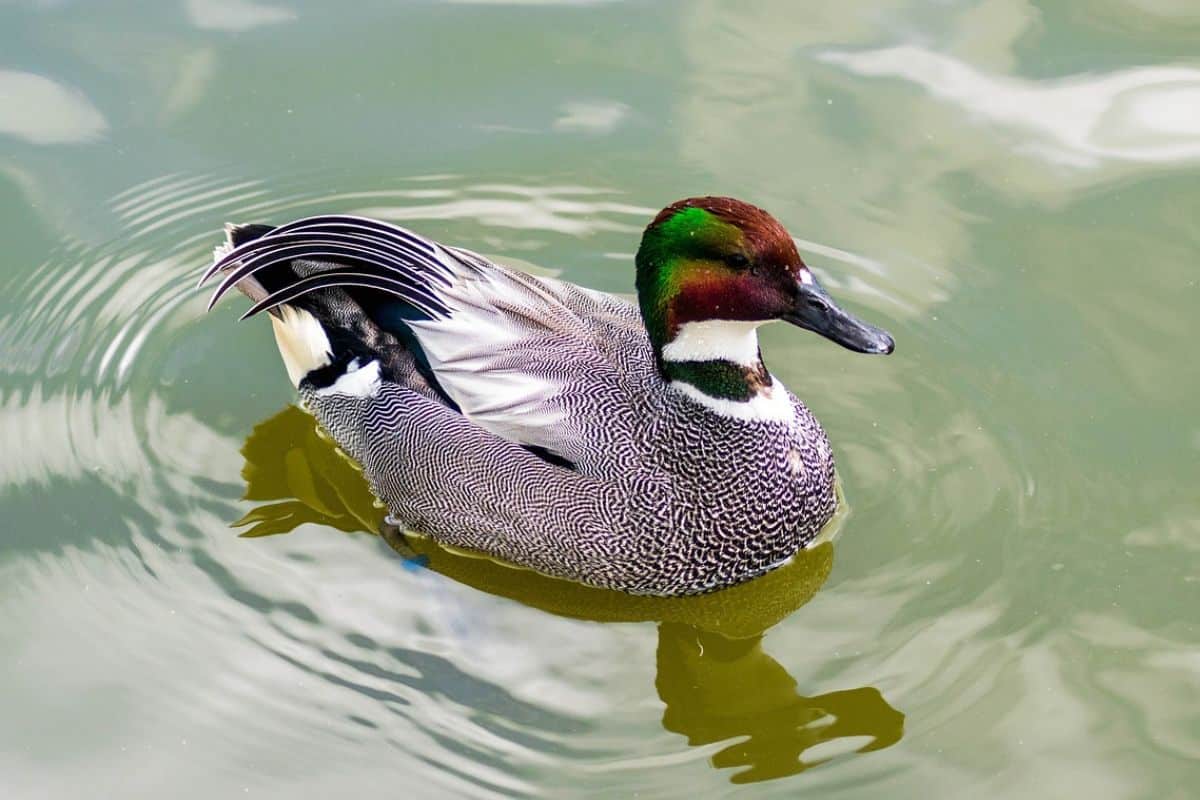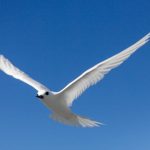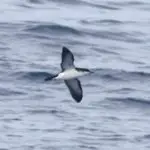Common Name: Falcated Duck
Scientific Name: Mareca falcata| Size | Diet | Range in Hawaii | Status in Hawaii |
|---|---|---|---|
| 17 in. - 23 in. | aquatic insects, mollusks and crustaceans | Unknown | Near Threatened |
The Falcated Duck, also known as (Mareca falcata), is a stunningly beautiful bird with a unique appearance. Its metallic green and purple head, silvery body, and long, curved tertials make it a sight to behold.
While it is native to eastern and southern Asia and Russia, it has been known to stray into western Alaska as a rare visitor. However, sightings elsewhere in North America are likely to refer to escapes from captivity.
Interestingly, the Falcated Duck has also been spotted in Hawaii, where it is considered an occasional visitor. In this article, we’ll explore the fascinating world of the Falcated Duck and learn more about its existence in Hawaii.
Falcated Duck
Appearance
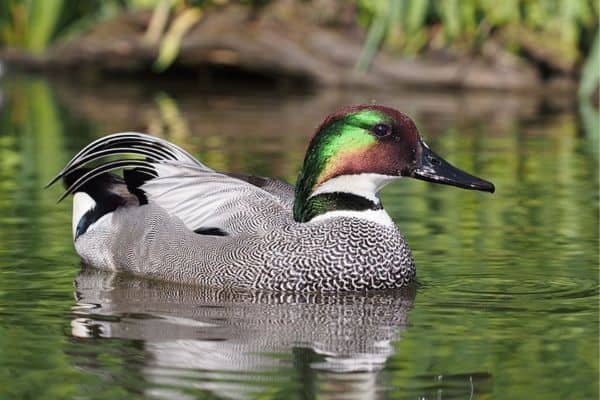
The Falcated Duck is a beautiful medium-sized duck species native to East Asia. It is known for its striking and distinctive appearance. The male Falcated Duck has a vibrant coloration with a dark green head and neck, adorned with a white crescent-shaped patch extending from the eye to the back of the head.
Its breast is chestnut-brown, while the rest of the body is predominantly gray. The most remarkable feature of the male Falcated Duck is its long, slender, and curved blackish-green central tail feather, which gives the species its name. This elegant tail feather is particularly pronounced during the breeding season.
In contrast, the female Falcated Duck has a more muted appearance. She has a light brown overall plumage with darker streaks and mottling. The female lacks the colorful head and the long tail feather that are characteristic of the male.
However, she still possesses a distinct white eye-ring. In terms of size, the Falcated Duck measures approximately 17-20 inches (43-50 cm) in length. It has a wingspan of around 29-33 inches (74-84 cm).
Diet
The diet of the Falcated Duck primarily consists of a variety of plant matter and small invertebrates. Being a dabbling duck, it feeds by upending its body in shallow water or grazing along the water’s edge.
Plant matter forms a significant part of the Falcated Duck’s diet. It consumes various aquatic plants such as pondweeds, sedges, grasses, and algae.
Additionally, it also feeds on seeds, grains, and agricultural crops when available. This adaptable diet allows the Falcated Duck to utilize a range of habitats, including wetlands, marshes, flooded fields, and rice paddies.
In addition to plant material, the Falcated Duck supplements its diet with small invertebrates. It forages for aquatic insects, mollusks, crustaceans, and other small aquatic organisms. It may also consume snails, worms, and occasionally small fish or amphibians.
The Falcated Duck’s feeding behavior involves dabbling, where it plunges its head underwater to reach submerged vegetation and prey. It also grazes on land, picking up seeds and other food items from the ground.
Nesting
The Falcated Duck follows a typical nesting pattern for dabbling ducks. It nests in a variety of wetland habitats, including marshes, lakes, ponds, and swamps, typically choosing locations with dense vegetation near water.
The breeding season for Falcated Ducks typically occurs from late spring to early summer. During this time, pairs of ducks form and engage in courtship displays. Males may perform elaborate courtship rituals such as head nodding, wing flapping, and vocalizations to attract females.
The female Falcated Duck takes the primary responsibility for nest building. She constructs the nest on the ground, usually concealed among dense vegetation or on an elevated mound to protect it from flooding. The nest is a shallow depression lined with plant material such as grasses, leaves, and down feathers from the female’s breast.
Once the nest is complete, the female lays a clutch of about 8-12 eggs, although the exact number can vary. The eggs are pale green or buff-colored, providing camouflage in the surrounding vegetation. The female incubates the eggs for around 25-28 days, diligently keeping them warm and protected.
After hatching, the female leads the ducklings to water, often within 24-36 hours of hatching. The young ducklings are precocial, meaning they are relatively independent and capable of feeding themselves shortly after hatching. The female continues to care for the ducklings, guiding them and providing protection as they explore their surroundings and learn to forage.
The Falcated Duck’s nesting period is characterized by parental care and vigilance to ensure the survival of the young. The ducklings grow rapidly and develop their flight feathers within a few weeks. Once they are capable of flight, the family group may join other ducks in flocks, preparing for migration or seeking new feeding areas.
Behavior

In terms of behavior, Falcated Ducks are generally social birds, often seen in small to large flocks, mingling with other waterfowl species. They are adept swimmers and divers, using their specialized bill to feed on aquatic vegetation, seeds, insects, and small invertebrates.
During the breeding season, male Falcated Ducks engage in courtship displays to attract females. These displays may include head-bobbing, wing-flapping, and vocalizations. Once paired, the female builds a nest on the ground near water, usually concealed among vegetation.
Habitat
The Falcated Duck is a species of dabbling duck found in East Asia. It primarily inhabits freshwater wetlands, including shallow lakes, marshes, ponds, and flooded fields
. This species is known for its affinity towards densely vegetated areas such as reed beds and dense grasses. Falcated ducks prefer habitats with abundant emergent vegetation for nesting and foraging purposes.
Range
The Falcated Duck is primarily found in East Asia, with its natural range encompassing parts of Russia, China, and Japan. However, occasional sightings of this species have been documented as rare and accidental visitors to Hawaii, including the Northwestern Hawaiian Islands.
While the Falcated Duck is considered an accidental visitor in Hawaii, its sporadic presence in the Northwestern Hawaiian Islands contributes to our understanding of bird migration patterns, long-distance dispersal, and the factors that influence avian movements. Continued observation and documentation of these rare sightings are vital for further research and conservation efforts in the region.
Conservation Status
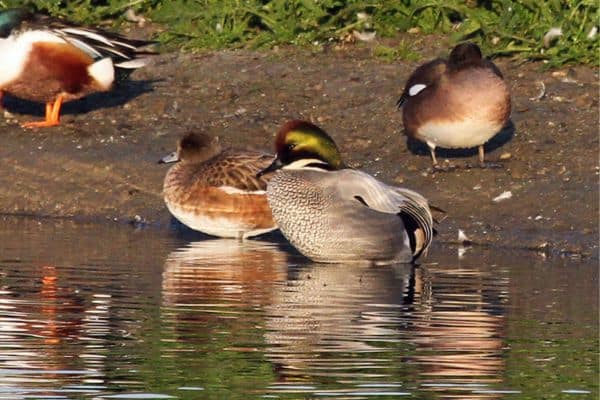
The Falcated Duck is currently classified as “Near Threatened” on the IUCN Red List. This status indicates that the species is not currently facing an immediate risk of extinction but is experiencing population declines and is potentially vulnerable to threats.
The Falcated Duck’s population is decreasing due to various factors impacting its habitat and well-being. Loss and degradation of wetland habitats, primarily caused by urbanization, agriculture, and industrial development, pose significant threats to this species. These activities disrupt the bird’s breeding grounds and foraging areas, leading to a decline in population size.
Interesting Facts
1. Known for its striking appearance
The Falcated Duck is known for its unique and beautiful plumage. The male has a distinctive, elongated, sickle-shaped greenish-bronze feather on its tertial, or wing, which gives the species its name.
2. Dimorphic plumage
The males and females of the Falcated Duck exhibit distinct differences in appearance. The males have the characteristic greenish-bronze feather and a dark head, while the females have a mottled brown plumage and a lighter head.
3. Accidental visitors
While not a regular resident, the Falcated Duck has been recorded as a rare and occasional accidental visitor to Hawaii, including the Northwestern Hawaiian Islands.
4. Migratory Behavior
Falcated Ducks are migratory birds, with some populations undertaking long-distance migrations. They breed in the Russian Far East, northeastern China, and parts of Japan, and migrate south to southern China, Taiwan, and the Korean Peninsula during the non-breeding season.
Frequently Asked Questions
1. Are Falcated Ducks vocal?
While generally quiet, Falcated Ducks do emit soft, whistling calls during courtship displays or when alarmed.
2. Do Falcated Ducks hybridize with other duck species?
Yes, hybridization has been observed between Falcated Ducks and other closely related duck species, such as the Mallard (Anas platyrhynchos).
3. How long do Falcated Ducks live?
The average lifespan of a Falcated Duck in the wild is estimated to be around 5 to 7 years. However, with favorable conditions and protection from threats, some individuals may live longer, potentially reaching up to 10 years of age.
4. Are Falcated Ducks social birds?
Falcated Ducks are generally social birds, often seen in small groups or mixed flocks with other duck species during their migration and wintering periods.
5. How do Falcated Ducks interact with other waterfowl species?
Falcated Ducks are known to exhibit both territorial and non-territorial behavior when interacting with other waterfowl species, depending on factors such as resource availability and breeding conditions.
